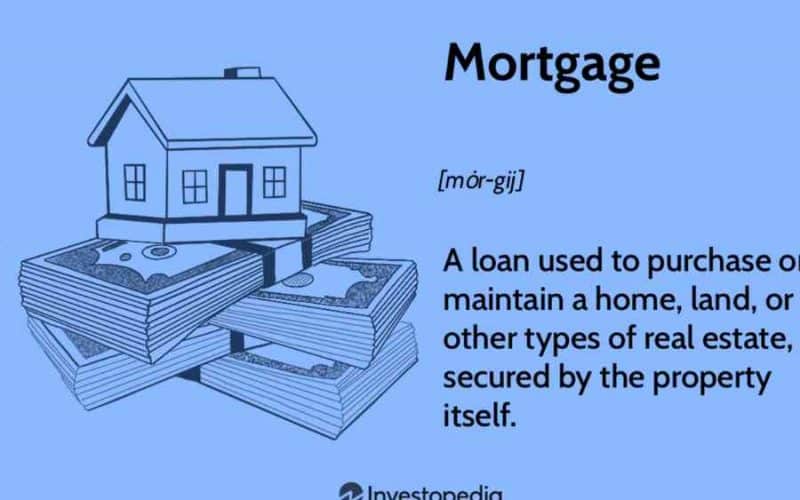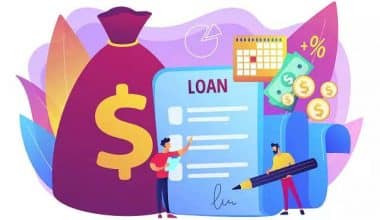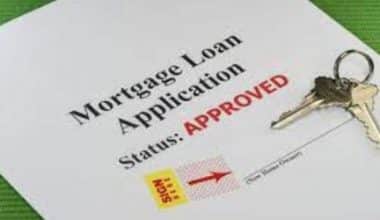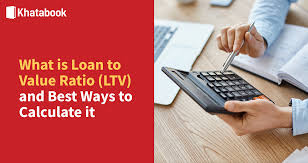A mortgage is a type of loan used to buy or keep up a house, land, or other types of real estate. In this case, the borrower agrees to make periodic payments to the lender. It is usually in the form of a series of regular instalments that are split into principal and interest. However, as a borrower, it is necessary to know the different types of mortgage loans that would be beneficial to you. As a real estate investor, it is also important to know the types of mortgage fraud and how to avoid them. So, as you read, keep an open mind to the various types of mortgages and which ones you can easily pay off.
What Is Mortgage and How It Works
A mortgage loan is a deal that you (the borrower) and a mortgage lender make to purchase and refinance a home using the lender’s money. This kind of agreement allows the lender the legal right to repossess a home in the event that you are unable to comply with the conditions of your mortgage, most frequently by failing to pay back the amount you borrowed plus interest.
When you apply for a mortgage, your lender provides you with a predetermined sum of money to purchase the house. You consent to repay your loan over an extended period of time with interest. Until the mortgage is paid in full, the lender has the right to the property.
Types of Mortgage
#1. Fixed-Rate Mortgage
A “fixed-rate mortgage” is a house loan with a fixed interest rate for the duration of the loan. In this type of mortgage, the borrower (the debtor) and the lender (the creditor) agree on the interest rate before disbursing the loan, and that rate stays the same throughout the loan term.
Fixed rate, as the name implies, indicates that the interest rate on the mortgage remains the same throughout. For customers who want to know how much they will pay each month, fixed-rate mortgages are attractive options. You can also secure fixed-rate mortgage loans with either residential or commercial real estate.
As a result, the loan’s payment amount and term are fixed, and the person in charge of paying it back benefits from a dependable, single payment and the opportunity to make financial plans based on this fixed expense. Fixed-rate mortgage borrowers are better off in the event of unexpectedly high inflation.
#2. Adjustable-Rate Mortgage (ARM)
An adjustable-rate mortgage (ARM) is a house loan with a variable interest rate. The starting interest rate on an ARM is set for a specific amount of time. The interest rate charged on the unpaid balance then resets sporadically, sometimes every month.
ARMs are also known as floating mortgages or variable-rate mortgages. An additional spread known as an ARM margin is added to the benchmark or index used to reset the interest rate for ARMs.
Read more on Adjustable-Rate Mortgage (ARM)
#3. Interest-Only Loans
In an interest-only mortgage, the borrower (mortgagor) is only obligated to pay interest on the loan for a predetermined length of time. Either the principle is paid back in full at a certain date, or it is paid back over time.
There are numerous methods to structure interest-only mortgages. Interest-only payments may be made for a predetermined amount of time, offered as an option, or continued for the whole term of the loan. Paying the interest only could be a condition that only specific borrowers can take advantage of with some lenders.
#4. Reverse Mortgages
Like a conventional mortgage, a reverse mortgage loan enables homeowners to borrow money while using the value of their home as collateral. When you take out a reverse mortgage loan, just as when you get a regular mortgage, the title to your house stays in your name. Borrowers do not make monthly mortgage payments with a reverse mortgage loan, in contrast to a conventional mortgage.
When the borrower vacates the property, the loan is paid back. Each month the loan sum increases as a result of fees and interest being charged. To qualify for a reverse mortgage loan, a homeowner must maintain good credit, pay property taxes and homeowners insurance, and utilize the home as their primary residence.
Types of Mortgage Loans
#1. FHA loan
An FHA loan is a house mortgage that the government guarantees. It is usually provided by a bank or other lender that has been approved by the Federal Housing Administration (FHA).
FHA loans allow applicants to have lower credit ratings than is often necessary and offer smaller minimum down payments than many commercial loans. The aim of an FHA loan is to assist families with low to moderate incomes in becoming homeowners. They are especially popular with first-time homebuyers.
#2. VA loan
A VA loan is one of the types of mortgage loans that can be obtained through a scheme set up by the Department of Veterans Affairs (VA) of the United States (previously the Veterans Administration). Veterans, active duty personnel, and the surviving spouses of these individuals can obtain VA loans to buy homes with little to no down payment, no private mortgage insurance, and typically competitive interest rates.
Active duty service members, veterans, and their surviving spouses can purchase homes with the aid of VA financing. On the value of a home, they offer financing of up to 100%. Borrowers who meet the requirements can utilize a VA loan to restructure their mortgage, remodel and repair their homes, or create a new one.
#3. USDA home loan
Homebuyers in certain towns and rural areas can obtain a USDA home loan, which requires no down payment. The USDA Rural Development Guaranteed Housing Loan Program, a division of the U.S. Department of Agriculture, guarantees USDA loans. Though the government may give them directly to eligible borrowers with incomes below a specific threshold, the majority of USDA loans are provided by partner lenders.
Because the government is taking on the risks connected with lending, USDA home loans frequently have lower rates than conventional mortgages in addition to not requiring a down payment. Even when the USDA issues the loans, this is still true.
Best Types of Mortgage Loans
Conventional loans come in two varieties: conforming and non-conforming, and they are not insured by the federal government.
Loans that “conform” to the standards established by the Federal Housing Finance Agency (FHFA), including those about credit, debt, and loan size, as their name implies. The conforming loan limits are $970,800 in more expensive areas and $647,200 in most areas.
The FHFA standards are not met by these loans. Instead, they focus on borrowers who want to buy more expensive homes or those with unique credit profiles. The best option for you is probably a conventional mortgage if you have good credit and the money to put down a sizeable amount.
To put you in the best possible position to obtain a mortgage and purchase a home, a helpful lender or mortgage broker could also assign you homework—specific financial areas to strengthen.
What Is the Most Common Type of Mortgage?
The most popular option for homebuyers is a conventional mortgage with a 30-year fixed rate.
The optimal loan for your circumstances will depend largely on your financial health, including your income, credit history, credit score, employment, and financial objectives.
To choose the finest loan options, mortgage lenders can assist you in examining your financial situation. They may also assist you in comprehending the qualifying needs, which are frequently intricate.
Different Types of Mortgage
#1. Fixed-rate mortgage vs Adjustable-Rate mortgage
A fixed-rate mortgage differs from an adjustable-rate mortgage in that the interest rate is predetermined at the time the loan is obtained and will not fluctuate. The interest rate on a mortgage with an adjustable rate may increase or decrease.
Compared to fixed-rate mortgages, many ARMs have lower starting interest rates. This starting rate might be constant for a few years, a year, or several years. Your interest rate will change when this promotional time is complete, and your payment amount is probably going to increase.
Your interest rate will be partially based on an index, which is a more comprehensive way to measure interest rates. When this index of interest rates rises, your payment increases.
When this index of interest rates rises, your payment increases. Your payment may occasionally decrease as interest rates fall, but not for all ARMs. Your interest rate may not go above a certain level with some ARMs. Some ARMs have a cap on the lowest interest rate you can have.
Read more on Wraparound Mortgage
Types of Mortgage Fraud
Mortgage fraud is a type of financial crime that includes altering loan paperwork or attempting to profit unlawfully from the mortgage loan process. For instance, knowingly providing false information on a mortgage application. Mortgage fraud practices include double sales, air loans, and straw purchases.
There are many distinct types of mortgage fraud, but some are more prevalent than others, and each has its warning signs.
#1. Possession Fraud
Occupancy fraud occurs when a borrower makes false claims about whether or not a property will be occupied. To gain favourable bank status, the owner will frequently state that they occupy the house even when they live somewhere else. Even if it’s untrue, stating that the home will be occupied by the buyer enables them to get lower interest rates, cheaper out-of-pocket payments, and larger loan-to-value ratios.
#2. Straw Buyer
A straw buyer is a person who intentionally misrepresents the nature of the transaction by acting on behalf of the real purchaser. The actual buyer might be trying to hide questionable involvements or have poor credit, both of which could prevent them from being approved for a mortgage. The genuine buyer will receive the property title when the straw buyer has completed the deal.
#3. Non-Arm’s-Length Dealing
A non-length arm’s transaction is another highly typical sort of transaction fraud. This happens when the two parties to the mortgage loan have a personal connection, leaving both the lender and the borrower vulnerable to the other’s manipulation.
#4. Flipping properties
This is when a property has a false appraisal that deceives the prospective buyer. Although buying a property, holding it, renovating it, and then reselling it for a profit is legitimate. However, buying it below market value and selling it right away at a price that is artificially inflated constitutes fraud.
A few typical signs can most likely alert mortgage lenders to an unauthorized home flip. A “flipper” who is supplying the false evaluation is frequently the middleman or straw buyer if the purchase is ongoing through them.
#5. Income Theft
Income fraud occurs when a borrower makes false claims about the availability or consistency of the source of income necessary to repay the loan. There are two prevalent forms of income fraud which include:
- False Statement of Income: The standardized loan application’s income information has not been thoroughly verified.
- Misrepresentation of Job: The borrower provides phoney employment paperwork, such as forged pay stubs and employer records.
Read more on Balloon Payment
What Are the 5 Parts of a Mortgage?
#1. Principal
The principal of your home loan is the amount you must pay back. The amount you must borrow is less if you could set aside or save enough money for the down payment. As a general guideline, never pay the down payment on a home using your emergency reserve, commonly referred to as a contingency fund or rainy day fund. In a similar vein, the funds designated to achieve other crucial objectives shouldn’t be spent on the down payment.
#2. Interest
This is the fee for the mortgage loan and is due as a proportion of the loan amount taken out. As you repay the loan, a higher amount is gradually moved toward the principle component, with a higher portion going toward interest during the first few years of the loan’s term. This is due to the EMIs’ use of the diminishing balance method in their computation. Your home loan will be repaid sooner and at a lower overall interest cost if you prepay or accelerate your payments.
#3. EMIs
The monthly instalment for a home loan (or any other loan, for that matter) consists of both the interest and the principle that must be paid back throughout the loan.
You should be aware of the percentage of the house loan that EMI is allocated to interest and principal, even if the EMIs will largely remain constant throughout the loan.
If a house loan has a floating rate, the EMI amount or loan term will change based on whether interest rates are rising or falling (up or down).
You, the borrower of the house loan, have the choice of adjusting the EMIs (by changes in interest rates) or changing the loan’s term, whichever best suits you. It makes sense to grasp your home loan amortization.
#4. Mortgage Insurance
Lenders frequently require you to acquire mortgage loan insurance when you apply for a house loan.
This safeguards the lender in the event of an unforeseen circumstance, such as job loss, death, etc.; the insurance provider will reimburse the lender for any unpaid loan balances. As a result, mortgage insurance has some advantages for both you and the lender.
#5. Homeowners Insurance
Some comprehensive policies additionally cover the house and its belongings in addition to mortgage insurance. This protects from the possibility of theft, fire, flooding, and other catastrophes. Again, this is advantageous to both you and the mortgage lender.
One of the finest ways to increase your asset is with a home loan. It also provides tax advantages: The Income Tax Act allows for a deduction for both principal and interest paid on a mortgage.
Why Is it Called a Mortgage?
The term “mortgage” comes from a Law French phrase that was used in Britain during the Middle Ages and meant “death pledge.” It describes a pledge that expires (dies) when either the debt is satisfied or the property is seized through foreclosure. The phrase “a borrower considering the form of a collateral for a benefit (loan)” can also be used to describe a mortgage.
Borrowers of mortgages may be businesses or people who are mortgaging commercial property or their homes (for example, their business premises, residential property let to tenants, or an investment portfolio).
What Are the 3 C’s in a Mortgage?
An underwriter starts working once they have the aforementioned documents (and potentially a few additional) in hand. The Three C’s—Capacity, Credit, and Collateral—are used to classify their findings as they assess credit and payment history, income, and assets that can be used as down payments.
#1. Capacity
By comparing your gross monthly income to the total of all of your recurring monthly debts, your underwriter will determine whether you can repay a loan. The debt-to-income (DTI) ratio will be the result of that calculation. They will also consider your 401(k), IRA, and bank account statements as assets.
#2. Credit
To determine how you’ve managed to pay off the debt in the past, underwriters review a composite credit report from Equifax, Experian, and Trans-Union.
They will learn how much credit you have taken on, the terms of the loan and whether your past credit history raises any concerns about your ability to repay the loan during this phase.
If you haven’t already figured it out, obtaining favourable mortgage conditions almost always depends on having a strong credit history.
#3. Collateral
In this scenario, your lender is trying to protect themselves against the possibility that you won’t pay back the loan. To do this, they request a home assessment to confirm the value of the house as a whole, not simply the loan amount and then calculate the loan-to-value ratio (LTV).
Conclusion
Obtaining mortgage loans at any time requires documents, so you have to prepare them beforehand. You can select from the different types of mortgage loans, and there are good options for first-time homebuyers. The different types of mortgage and mortgage loans are entirely based on the rates and timing (i.e monthly. yearly) while selecting one, you have to look at how well you can stick it on time.
FAQs
What are three common mortgage mistakes?
- Choose the first lender you come across.
- Not obtaining prior approval.
- Failure to protect your credit.
How do I know if my mortgage will be approved?
- If your credit rating is higher than 620.
- You’ve put down three to five per cent or more.
- You have little debts at the moment.
- You have at least two years of consistent employment and income.
What not to do while trying to get a mortgage?
- Don’t leave your employment, stop working, or start your own business.
- Avoid taking on more long-term debt by avoiding purchases like furnishings or a car for your new house.
- Don’t use credit cards more frequently or let any bills go unpaid.
- Keep your current financial institution.






